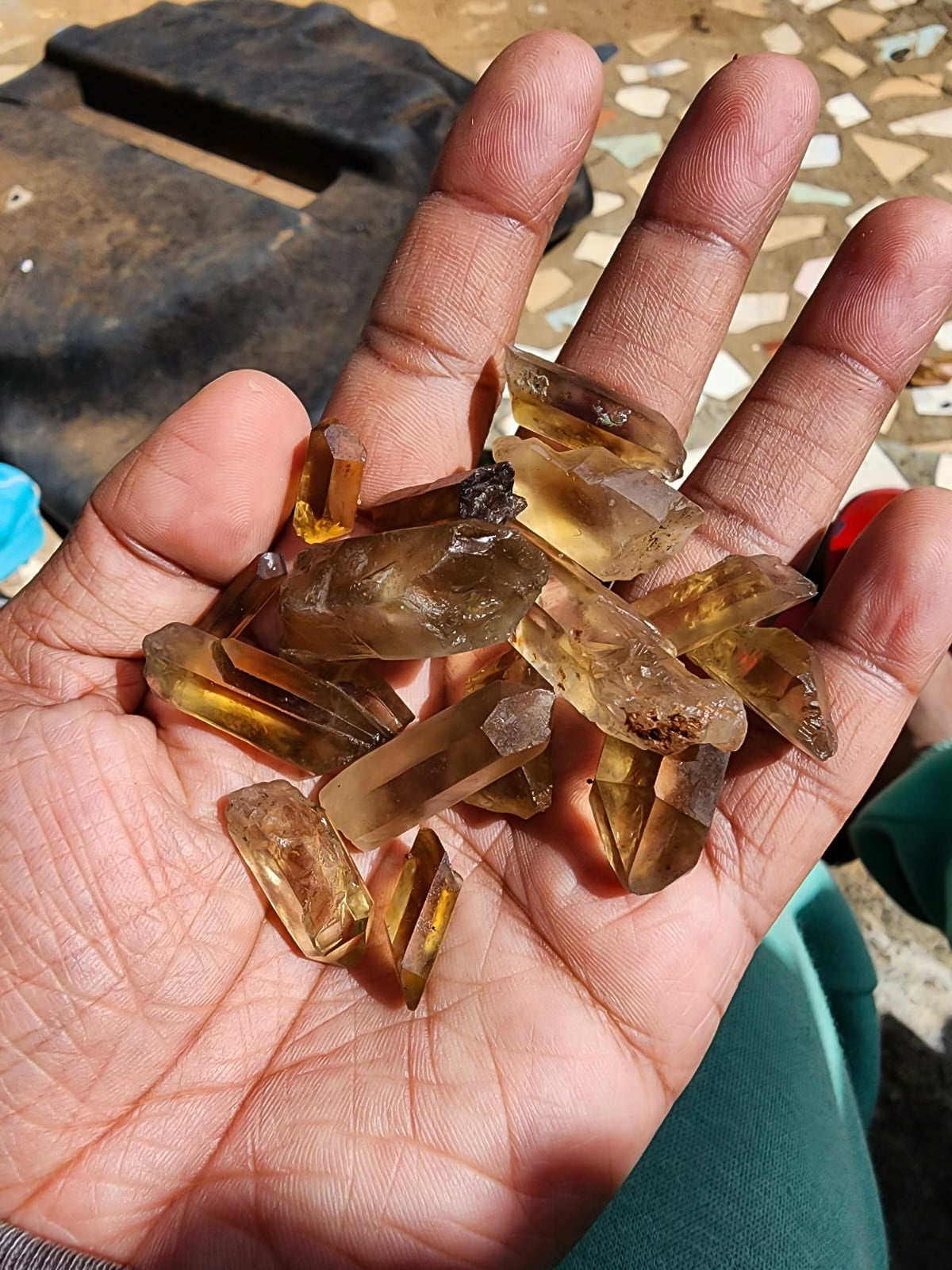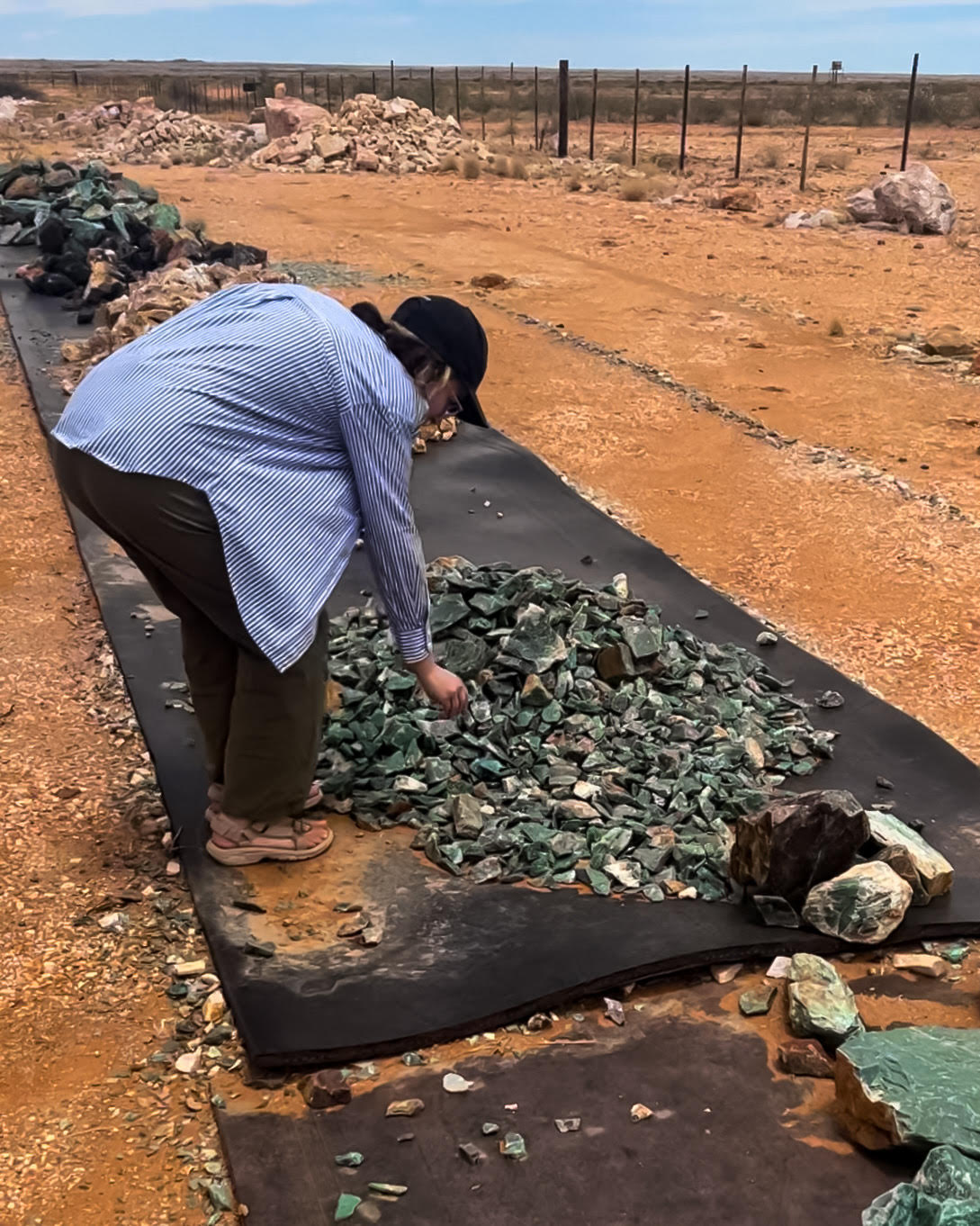Article: Dangerous roads lead to hidden treasures in the Republic of Congo

Dangerous roads lead to hidden treasures in the Republic of Congo
In the heart of Africa lies a country with rich culture, history, and hidden treasures – the Republic of Congo. While often overshadowed by its larger neighbors, this vibrant nation has emerged as a noteworthy source of minerals, captivating the attention of collectors worldwide.

We entered into the Republic of Congo at the Ouesso border crossing coming from Cameroon. The main road going through the country was in surprisingly good condition, making for fast travel to its capital Brazzaville. A noteworthy stop is in the remote Louna National Park, where you can spot Gorillas among other rarely-seen wildlife. Just be careful when driving into the canyon, as the steep and sandy slope makes it very difficult to return back to the top. We pushed our old Toyota pick-up to its limits, unloading some weight and flooring it through the tall grass for better traction.

The Republic of Congo is home to a diverse range of mineral species. Among the notable varieties unearthed from this African nation are malachite, azurite, hemimorphite, veszelyite, smithsonite, amethyst, and garnet, to name just a few. Once we arrived in Brazzaville, we met with many artisans who were eager to show us their mineral specimens and handicrafts. The artisanal markets in Brazzaville make for a good starting point before venturing deeper into the country, just remember they speak French here, so make sure you polish up to at least a basic level before visiting.

Once we finished in Brazzaville, we continued on to cross into the Democratic Republic of Congo (DRC), heading off road 8 hours through the jungle towards the town of Luozi, where we crossed the mighty Congo River. The border crossing into DRC is all but a walk in the park. After the long drive you end up deep in the DRC with no chance to turn back due to severe off-road conditions and lack of diesel fuel. The officers waiting for you know this, so make sure you come prepared with your best smile and patience. Two travellers some days in front of us, lamented that they had endured many hours of negotiation, before reluctantly having to pay additional fees (bribes) to enter the country. These "fees" requested from police and military check stops are an unfortunate, but common occurrence. Once you reach the town of Luozi you have the possibility to find diesel fuel canisters from some local merchants.


Here we are at the bank of the Congo River, waiting for a small boat to take us across. The Congo is definitely the road less travelled, so make sure to check the security situation and be well prepared before planning your expedition. We were under-prepared, and burned through our 20L reserve canister, ending up near a remote village. Thankfully this kind gentlemen offered to refuel us with his watering can, and it gave us great sense of relief that we would not be stranded somewhere in the jungle. Surprisingly, the watering can got the refuelling job done pretty quickly, who knew!

While most of the mining done in DRC is for industrial minerals such as cobalt, copper, gold, and tin, some of the mines do sell minerals specimens as a by-product. It is however, very difficult to access these mining sites, and it is not a good idea to do so unless you have arranged an escort, and have established an official contact at the mine.
Artisanal miners are working in many of the same regions, and are eager to sell their mineral specimens, as they lack the market access that larger mines have. As a result, it is not uncommon to find plenty of spectacular pieces with the locals!

